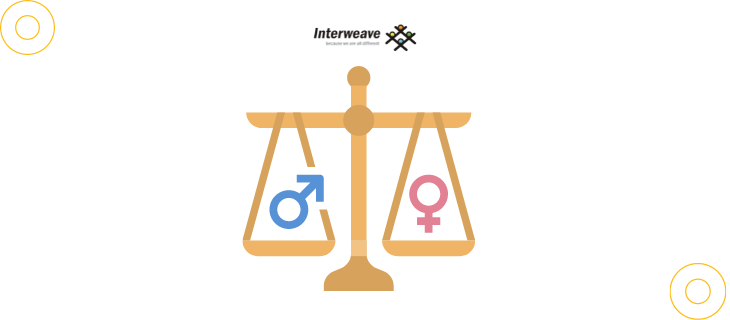
Gender Parity Post the Covid-19 Pandemic
What has changed for working women in India because of the Covid-19 pandemic?
What has been its impact on gender parity at the workplace?
What can organisations do to support women through these unprecedented times?
How can organisations bring women who have left during the pandemic back to the workplace?
This article will seek to answer these questions and many more.
The Covid-19 pandemic has impacted all our lives in a myriad of different ways – whether it is in terms of how we work, travel, communicate, manage our health, plan our personal finances, prioritise what is important for us, etc. While its fallout has impacted many livelihoods, several surveys show that women have been harder hit economically and financially.
Research by McKinsey Global Institute in July 2020, which uses data and trends from unemployment surveys in the United States and India, shows that women’s jobs have been 1.8 times more vulnerable to the effect of the Covid-19 pandemic than men’s jobs. While women’s jobs have been more vulnerable because of their disproportionate representation in sectors that have been negatively impacted by the pandemic, many women are facing several other challenges that organisations can proactively address.
As part of the work that I do at Interweave Consulting, I regularly interact with mid-level people managers, senior business leaders, and women professionals and leaders in the corporate sector in India.
Here are some challenges I have frequently heard from working women:
“My male colleagues work longer hours than I do. I don’t know how I am being perceived and this worries me. Will this affect my future career prospects?”
“I am finding it difficult to manage different priorities at work and home. Childcare and domestic responsibilities have significantly increased. I don’t know how much longer I will be able to juggle multiple responsibilities”
“I can’t find time to invest in my self-development. I have put my career aspirations on the back burner”.
“Working from home has begun having a toll on me mentally and emotionally. I don’t get any “me time” or time to focus on my physical fitness. My self-confidence is at its lowest.”
“After my organisation announced that they would adopt a hybrid model, a lot of men have started going back to work. I still work virtually. I have started feeling “invisible”, as I miss out on many important discussions and meetings.
The challenges being faced by women among others include increased unpaid care work and time spent on family responsibilities, societal attitudes and unconscious biases about gender roles amongst both men and women, lack of family support, etc.
Deloitte’s 2021 “Women @work report”, shows that the pandemic has had a bigger negative impact in India than the rest of the world in terms of women’s mental health, physical health, increased caregiving / household responsibilities, optimism about career prospects, etc. 31% of the women respondents from India said that the support they have received from their employer’s during the pandemic has been sufficient, compared to 39% globally.
Why should organisations care and what can they do?
A challenge expressed by many senior leaders that I interact with is, “We are losing experienced women that we want to retain, at a much faster rate than before. We have never experienced something like this before. What can we do?”
Here are the top 5 things that organisations can do to address these challenges around gender parity at the workplace:
1. Retention of women employees
Policies and initiatives which can be considered can include adoption of a flexible working policy, family-friendly policies or caregiver leave policies that are gender-neutral, provision of sabbaticals, support with childcare, restructuring of roles for a short period, etc.
2. Analysis of data from performance reviews and promotions
Carry out an analysis of the data on performance reviews and promotions, disaggregated by sex. This can help to identify any variances or patterns in performance ratings or promotions decisions made during the pandemic and their potential impact on the long-term career prospects of women employees.
3. Increase focus on Workplace Equity
Workplace equity can be achieved when all employees coming from different and diverse backgrounds, have equal opportunities and support to succeed and grow. Organisations can increase their focus and investment on initiatives like Women Leadership Programs, upskilling programs for women, mentoring programs, return to work programs for women who have taken a career break, etc.
4. Support with mental, emotional, and physical health and fitness
provide access to counseling services, physical fitness facilities/ online courses, yoga and meditation courses; allow some time off when employees are feeling stressed or overwhelmed with work pressure or responsibilities at home; train people managers to adopt an empathetic approach to team management so that they consider individual circumstances while allocating work or making people decisions.
5. Build inclusive workplace cultures
Proactively identify any unconscious biases which can get amplified and build awareness to address these so that workplaces are more inclusive e.g.: if more men than women return to the workplace through the hybrid model consider whether this impacts how “visible” women employees are to senior management; consider how much weightage is given to the number of hours worked vs. outcomes achieved when measuring workplace performance; are women participating less in virtual meetings compared to their male counterparts and does this impact our perception about their performance, etc.
The gender gap in India is growing and unless organisations take proactive, affirmative actions, this gap will only widen. According to the World Economic Forum’s Global Gender Gap Report 2021, India has slipped 28 places from a year before, to rank 140th among 156 countries. What is worrying is that more women than before are leaving the workplace.
The female labour participation rate in India had fallen to 20.3% in 2019, from more than 26% in 2005, and this is one of the lowest participation rates in the world (World Bank estimate).
A proactive approach will enable organisations to provide the support that their women employees need and take measures to address challenges or barriers which can come in the way of building gender parity and gender-balanced workplaces.
Organisations must address these challenges at the earliest before the gap in gender parity in Indian workplaces widens even further.
About the author

Shubhashree’s rich professional experience of 16+ years spans across L&D, D&I, Talent Management, HR & OD Consulting & Advisory, in global and regional roles. She has worked across diverse industries and with multi-cultural colleagues from the US, UK, Asia, and Japan.
Shubhashree leads the Interweave Institute of Inclusion at Interweave Consulting Pvt. Limited. The objectives of the Inclusion Institute are to further strengthen Interweave’s position as a thought leader in DEI, through research & development and through the incubation of new business solutions.
She is passionate about designing and facilitating interventions which have a lasting impact on her participants’ lives.
Shubhashree Naldurg | Head | Interweave Institute of Inclusion
P.S – This blog was written for CXO Outlook – Insights, Ideas, and Inspirations and published on https://www.cxooutlook.com/gender-parity-post-the-covid-19-pandemic











